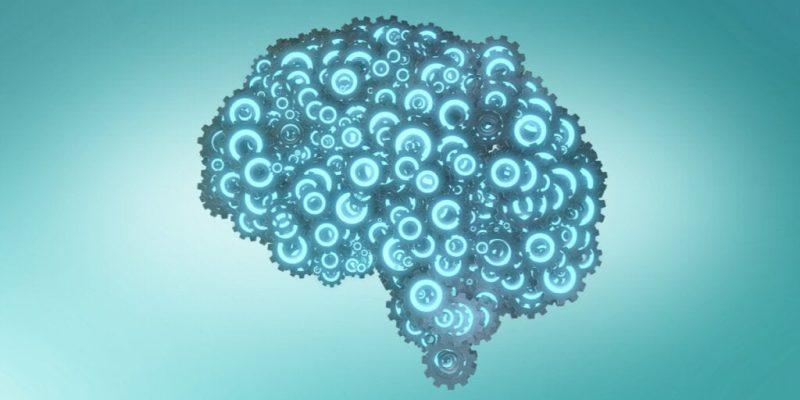What’s a cell? What’s the capital of your country? How many planets are there in the solar system? Who’s the president of the United States? How many odd numbers are there between zero and ten? What’s your home address? The type of memory that stores the information you need to answer each of these questions is known as semantic memory.
Semantic memory is a type of long-term memory. Thanks to it, you can remember numbers, the grammar of a language, the letters of the alphabet, etc. In fact, it’s an extraordinary support system you use on a daily basis.
What’s semantic memory?
Semantic memory is a long-term memory that allows you to encode, consolidate, store, and recall meanings, understandings, and facts about the world. It acts as a storage space for your knowledge about the environment.
Therefore, it’s a type of explicit or declarative memory. We say that it’s explicit because it can be retrieved voluntarily. We also say that it’s declarative because it can be verbalized or explained.
For example, try to answer the following question: What’s the name of the galaxy we live in? To answer, you had to consciously remember and search your knowledge for the most likely answer.
It’s important not to confuse semantic memory with episodic memory, which is the other subtype of explicit memory. Episodic memory refers to events that happened to you in a certain place and time, while semantic memory refers to the general or specific knowledge that you have of the world.
In episodic memory, there’s a clear reference to time, space, and the self. Whereas, in semantic memory, this reference is lost. Do you want to prove it? Then, answer the following questions: What day (or year) and where did you learn that two plus two equals four? What day (or year) and where did you celebrate your graduation?
As you can see, it’s more complicated to accurately locate the knowledge you have in space and time. For example, you know what two plus two is but not the exact moment at which you learned this fact.
However, with episodic memory the opposite happens, for space and time are necessary. That’s why it’s easier for you to remember the day and place where you graduated from school or university, how the place was decorated, who was there, etc.
Characteristics of semantic memory
We’ve been mentioning some characteristics of semantic memory. Can you describe them? If so, then you’re using your semantic memory. Indeed, by accessing what you remember from what you’ve read about semantic memory, you’ve used it.
A key feature of semantic memory is that it only encodes, consolidates, stores, and retrieves knowledge, concepts, meanings, and understandings about the world, others, or yourself. Through it, you know what the world is like, how old you are, and how a relative behaves when they get drunk. In it, you can house knowledge about historical events such as the First World War.
Understanding the environment
Semantic memory allows you to understand the environment as well as yourself. In fact, it helps you to reflect on your personal characteristics. The concepts that are stored in it give you the foundation to build your beliefs, knowledge, expectations, and ideas.
Semantic memory doesn’t require a temporal or spatial reference to be able to configure itself. For example, knowing that Europe is a continent doesn’t require a spatial or temporal experience of Europe. You just need to read it in a book or see a world map. To recover this information, it’s not necessary to remember a place or a moment, it’s only necessary to remember the concept and the information that’s been read or heard about Europe.
This recovery process leads to another characteristic, that of consciousness. By accessing or reconstructing the information that your semantic memory has encoded, you do so intentionally, in the sense that you begin to search, in your accumulation of knowledge, for the information you need. For instance, what Europe is or where it’s located.
Semantic memory is also characterized by maintaining the memory of your representations of semantic knowledge. These are the representations of words, things, and their properties that help you understand the world and facilitate your interaction with it.
Associated disorders

Disorders and diseases linked to semantic memory
What disorders, diseases, or alterations can affect semantic memory? Let’s take a look at some of them:
- Alzheimer’s disease. This neurodegenerative disorder is characterized by memory impairment—among other symptoms. It isn’t only episodic memory that’s affected, but semantic memory as well. Consequently, the person may forget what year it is or how old they are etc.
- Semantic dementia. This dementia is identified by a progressive deterioration of the ability to recognize objects and understand words. Indeed, in order to recognize an object or know the meaning of a word, semantic memory is needed.
- Amnesia. Amnesia may be distinguished by the inability to remember (retrograde amnesia) or the inability to store new information or knowledge (anterograde amnesia). The amnesic person doesn’t only forget events in their life, but also the knowledge they had about a particular field of knowledge, or the world in general.
- Head injuries. A strong blow that injures the brain regions involved in semantic memory, such as the temporal lobe or the hippocampus, can cause dysfunctions or alterations in this type of memory, making it impossible to retrieve memories.
Finally, semantic memory allows you to recover meanings and concepts without the need to resort to or start from a specific experience. It’s not represented in temporal or spatial terms and the origin of the information it contains is diffuse as its origin isn’t clear when you retrieve it. This specific type of memory is the link that connects you with the world and its phenomena.
The post Semantic Memory: Definition, Characteristics, and Associated Disorders appeared first on Exploring your mind.



















Comments